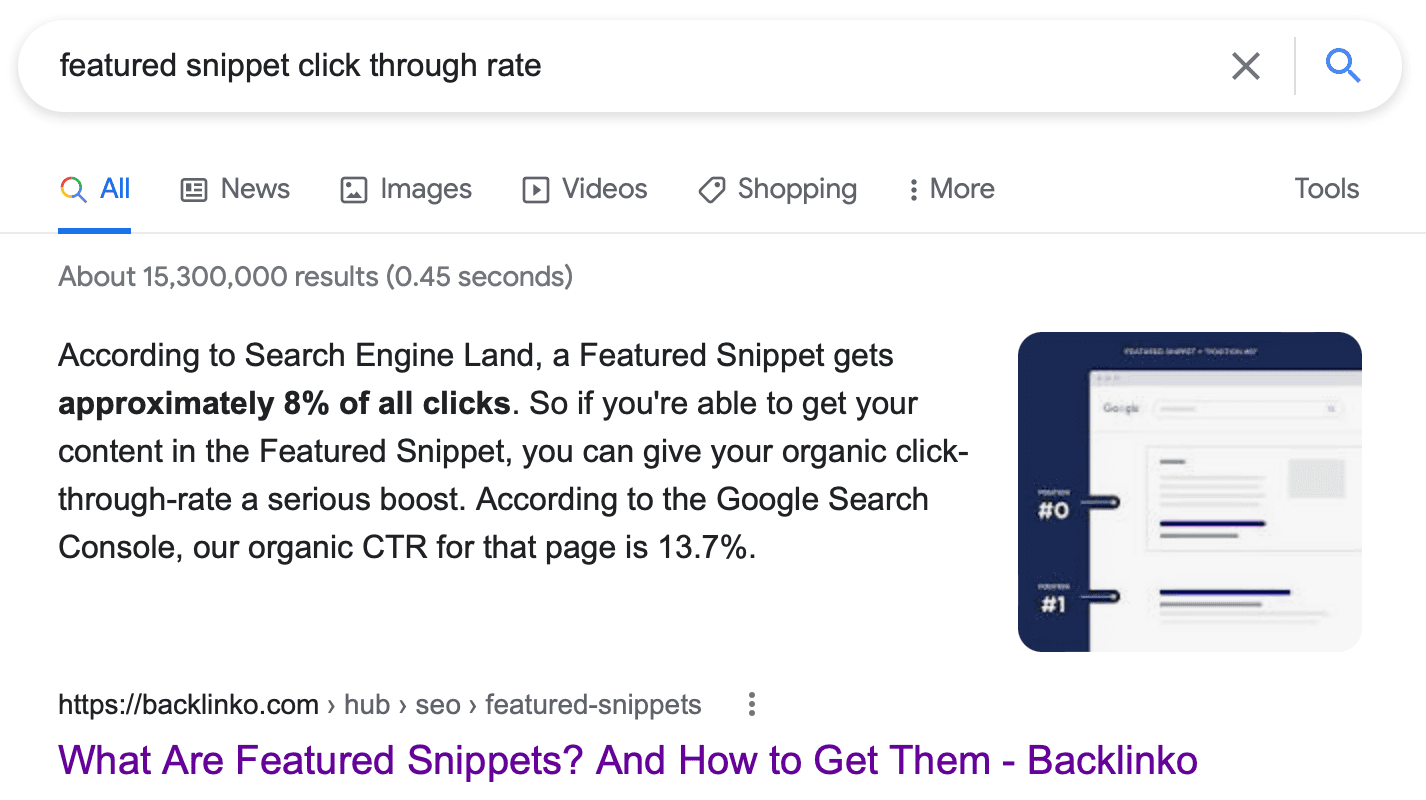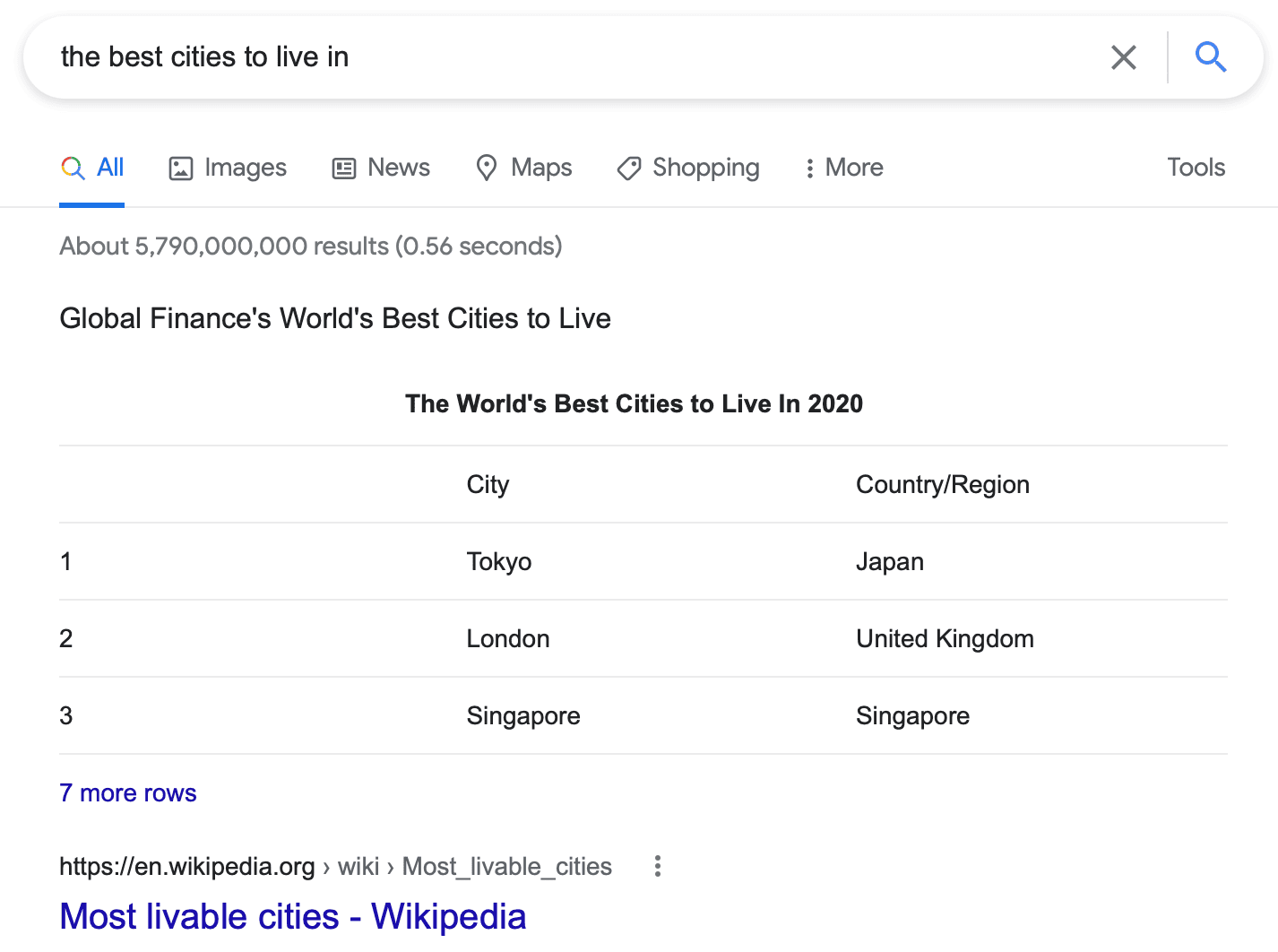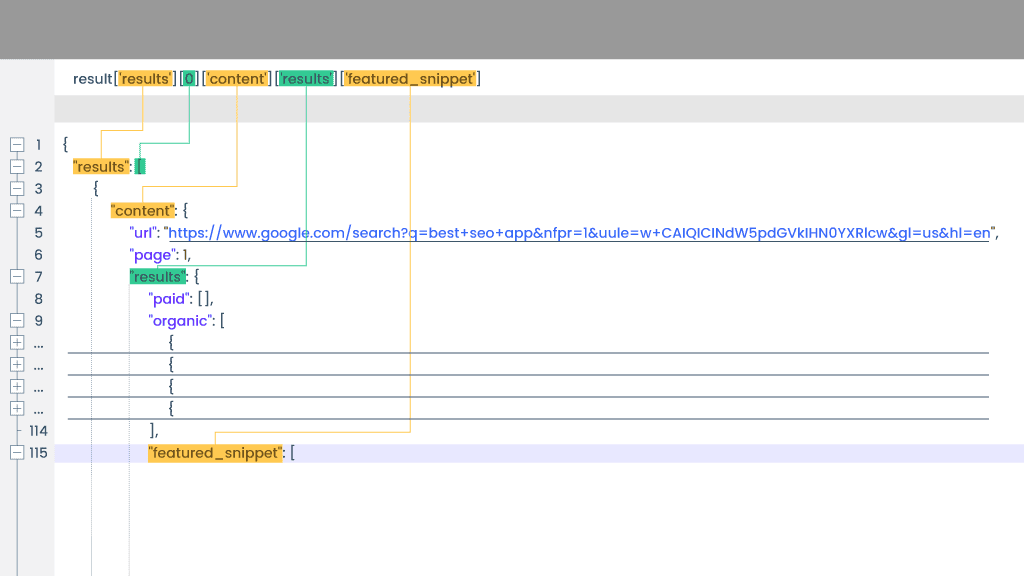Python Tutorial – Scraping Google Featured Snippet [VIDEO]
What do you usually do when a specific question or product pops into your mind, and you need a quick answer? You probably type it on Google and select one of the top results.
Looking at this from a business perspective, you probably want to know how Google algorithms picked those top-ranking pages since being one of them attracts more traffic. The result pages of the largest search engine in the world are an excellent source for competitors’ and market research. Every good decision is based on good research, right?
Feature snippets magic
If you have decided to do your research based on SERPs, you should know what kind of data you are willing to gather. We already know that results pages present various types of content, starting from the common paid and organic results to videos, related questions, or featured snippets. And this list is far from being finite.
In this blog post, we will focus on featured snippets and the level of their coolness.
Why should you care about featured snippets?
Google featured snippets are the summarized piece of information shown right below the search ads after sending the search query. Since we are used to skimming through the results quickly and pressing on the top ones, those featured snippets increase the traffic of the particular page. Those mighty pieces of content provide people with a shorter version of the answer, and if it is satisfying enough, the users tend to press on the search result to learn more about the topic.
Types of Google featured snippets
There are no fixed forms of featured snippets. In fact, many of them are floating around, but we picked the most popular ones.
#1 Paragraph featured snippet
80% of Google featured snippets show up in the form of a short paragraph. They are created simply by picking a part of the content unit on the website, which directly answers the query. It immediately answers the main question and sparks the reader's interest to learn more. They already know that there is a greater chance to find the needed information in this place.
Pssst, a quick advice: FAQ sections and blog pages can help you ease the harshness of fighting for the featured snippets.

#2 The table
Such a snippet can spare you a headache if you are searching for a quick, systemized comparison of something. The table format is not necessarily shown as it is in the original content – it could be changed, focusing on adapting it to better answer the query. So, if you want to win the particular query by earning a featured snippet, the provided content is the main thing leaving the design behind. If you have valuable lists, pricing, rates, or other data to share, your chances of earning a table featured snippet increase considerably.

#3 The list
Featured snippets shaped as lists can provide ordered or unordered information, so there is plenty of space for your imagination on how to build such informational lists. You can use simple listicle articles, recipes, how-to tutorials, and feature lists.

Why are featured snippets such a big deal?
Featured snippets usually outrank other results, automatically attracting more traffic and increasing click-through rate. Consequently, it could be a razor-sharp marketing move if your generated content can be "promoted" to the top places of search result pages. Featured snippets could be your answer on how to win those first positions.
You can find a lot of tips on how to improve your SEO game out there. Searching for relevant keywords with low difficulty, creating valuable content, and structuring it based on your target audience's searching habits is essential. But where exactly should you start?
There are a lot of hacks floating around about how to optimize your page for those featured snippets, but sometimes you do not know what tactic should be applied first. It is always good to keep an eye on your competitors, so you can start from a competitor or overall market research.
Scraping for market research
Knowing how powerful and sophisticated Google is, it would be naive to expect that scraping their results at scale is as easy as apple pie. An automated scraping solution is a smart move, however, if you make too many requests from one IP address you’ll quickly get blocked without finishing your greater goal.
We have good news for you – Smartproxy rocks premium-quality SEO proxies together with a full-stack scraping tool. Our SERP Scraping API includes a proxy network, web scraper, and a data parser. The full-stack solution helps you collect any desired information from SERPs, including Google. With this tool, you can run the research smoothly, since we have picked the best residential, mobile, and datacenter proxies for you. Keep reading as this Python tutorial will help you try out our SERP Scraping API right away.
By the way, we have a bunch of Python tutorials about scraping, including how to scrape Google SERP, so better check them out if you want to start with more simple things. If Python is not your thing, we prepared a detailed tutorial on how to scrape with cURL and Terminal, so you can choose which scraping technique is better for you.
Step-by-step guide for scraping Google featured snippets with Python
For this tutorial, we will use our SERP Scraping API’s real-time integration. Don’t worry, it's beginner-friendly! If you need code examples for your query, you can check them on our real-time integration page. This tutorial is based on Python, however, you can find code examples for Node and PHP, if you are willing to try other programming languages.
Let’s jump straight to the code:
Step 1: Prepare to use SERP Scraping API
Import requests and the pprint library to receive the nicer output of the query results.
import requestsfrom pprint import pprint
To start using our SERP Scraping API, add your credentials.
username = 'SPusername'password = 'SPpassword’
Step 2: Set up queries
After completing the primary steps, create a list of queries you want to scrape from Google. For this example, we used five different search queries that could provide featured snippets as the results.
queries = ['best seo app','best residential proxies','pizza near me','dental clinic','best chicken wings in the area']
Add the necessary header as indicated below. After this, do not forget to initialize a featured_snippets dictionary as a place where the gathered data is going to be stored.
headers = {'Content-Type': 'application/json'}featured_snippets = {}
For now, your code should look like this:
import requestsfrom pprint import pprintusername = 'username'password = 'passsword'queries = ['best seo app','best residential proxies','pizza near me','dental clinic','best chicken wings in the area']headers = {'Content-Type': 'application/json'}featured_snippets = {}
Step 3: Build the query request
When the setup part is done, to get the desired results, we will need to perform a POST request to the SERP Scraping API and repeat this action for all the chosen queries.
We choose a POST request as this method allows us to send the data to the server and scrape according to the pre-set parameters posted in the request.
response = requests.post('https://scrape.smartproxy.com/v1/tasks',
As we have already written our header parameter in the previous step, we can leave the following code part like this:
headers = headers,json = {
Since our primary target is Google featured snippets, we identify the target as Google search (google_search) and the domain as .com for the same reason.
'target': 'google_search','domain': 'com',
For more specific research, you can identify the location. By the way, location is not the only parameter you can use to filter up your results. Learn more about it in our documentation.
Since we are searching the specific queries from the list above, in the query part just leave “query”. If you would like to receive the results neatly parsed instead of raw HTML, mark “true” in the parse parameter.
'geo': 'London,England,United Kingdom','query': query,'parse': True,},
Lastly, identify yourself using the same username and password to run the query.
auth = (username, password)
The whole code for step 3 looks like this:
response = requests.post('https://scrape.smartproxy.com/v1/tasks',headers = headers,json = {'target': 'google_search','domain': 'com','geo': 'London,England,United Kingdom','query': query,'parse': True,},auth = (username, password))
Step 4: Filtering featured snippets results
The raw results are not enough if we seek to gather featured snippets in particular. Since the scraper returns all the results, we need to set a condition to find featured snippets among them.
Firstly, assign the json as output to the "result" variable:
result = response.json()
Then, check if you got a featured snippet in the result:
if 'featured_snippet' in result['results'][0]['content']['results']: featured_snippets[query] = (result['results'][0]['content']['results']['featured_snippet'])

To get a more eye-friendly formatting, add the same pprint method as before:
pprint(featured_snippets)
Voila! If you have done everything correctly, you should end up with a list of featured snippets you have been searching for.
C:\serps>python featured_snippets.py{'best residential proxies': [{'desc': 'Top 9 Residential Proxy Providers\n''OxyLabs. ... \n''GeoSurf. ... \n''Bright Data. ... \n''Smartproxy. ... \n''NetNut. ... \n''StormProxies. ... \n''RSocks. ... \n''Shifter. Shifter, which claims to have''the largest pool of peer-to-peer''connections on the Internet, with 31''million IP addresses, has won the''Internet vote of confidence for many''users.\n''More items... \n'•\n''Jul 8, 2021','pos_overall': 5,'title': 'The Top 9 Residential Proxy Service''Providers','url': 'https://www.webscrapingapi.com/top-residential-proxy-providers/','url_shown': 'https://www.webscrapingapi.com> ''top-residential-prox...'}],'best seo app': [{'desc': 'Best Search Engine Optimization (SEO) Tools\n''Ahrefs: SEO Keyword Tool. ... \n''Google Search Console: Top SEO Tool. ... \n''SEMRush: Marketing SEO Tools. ... \n''KWFinder: SEO Keyword Tool. ... \n''Moz Pro: SEO Software. ... \n''Ubersuggest: Keyword Tracking Tool.\n''Answer the Public: Free SEO Tools. ... \n''SpyFu: Free SEO Tools.\n''More items... \n''•\n''Sep 8, 2021','pos_overall': 1,'title': '18 Best SEO Tools That SEO Experts Actually Use''in 2022','url': 'https://www.oberlo.com/blog/seo-tools','url_shown': 'https://www.oberlo.com> Blog'}]}C:\serps>
The entire code:
import requestsfrom pprint import pprintusername = 'username'password = 'passsword'queries = ['best seo app','best residential proxies','pizza near me','dental clinic','best chicken wings in the area']headers = {'Content-Type': 'application/json'}featured_snippets = {}for query in queries:response = requests.post('https://scrape.smartproxy.com/v1/tasks',headers = headers,json = {'target': 'google_search','domain': 'com','query': query,'parse': True,},auth = (username, password))result = response.json()if 'featured_snippet' in result['results'][0]['content']['results']:featured_snippets[query] = (result['results'][0]['content']['results']['featured_snippet'])pprint(featured_snippets)
Yay, you're done! Check our video with another great Python tutorial if you need more information on scraping the mighty Google with our SERP Scraping API.
Wrapping up
Great, now you have fresh material for your research. Don’t forget that you can scrape a bunch of cool stuff with the SERP Scraping API – top stories, popular products, real-time ads, and more.
By the way, you can always explore our API documentation for great examples. And if you have any specific questions, our round-the-clock support heroes are more than ready to help you fix everything.
About the author

James Keenan
Senior content writer
The automation and anonymity evangelist at Smartproxy. He believes in data freedom and everyone’s right to become a self-starter. James is here to share knowledge and help you succeed with residential proxies.
All information on Smartproxy Blog is provided on an "as is" basis and for informational purposes only. We make no representation and disclaim all liability with respect to your use of any information contained on Smartproxy Blog or any third-party websites that may be linked therein.






